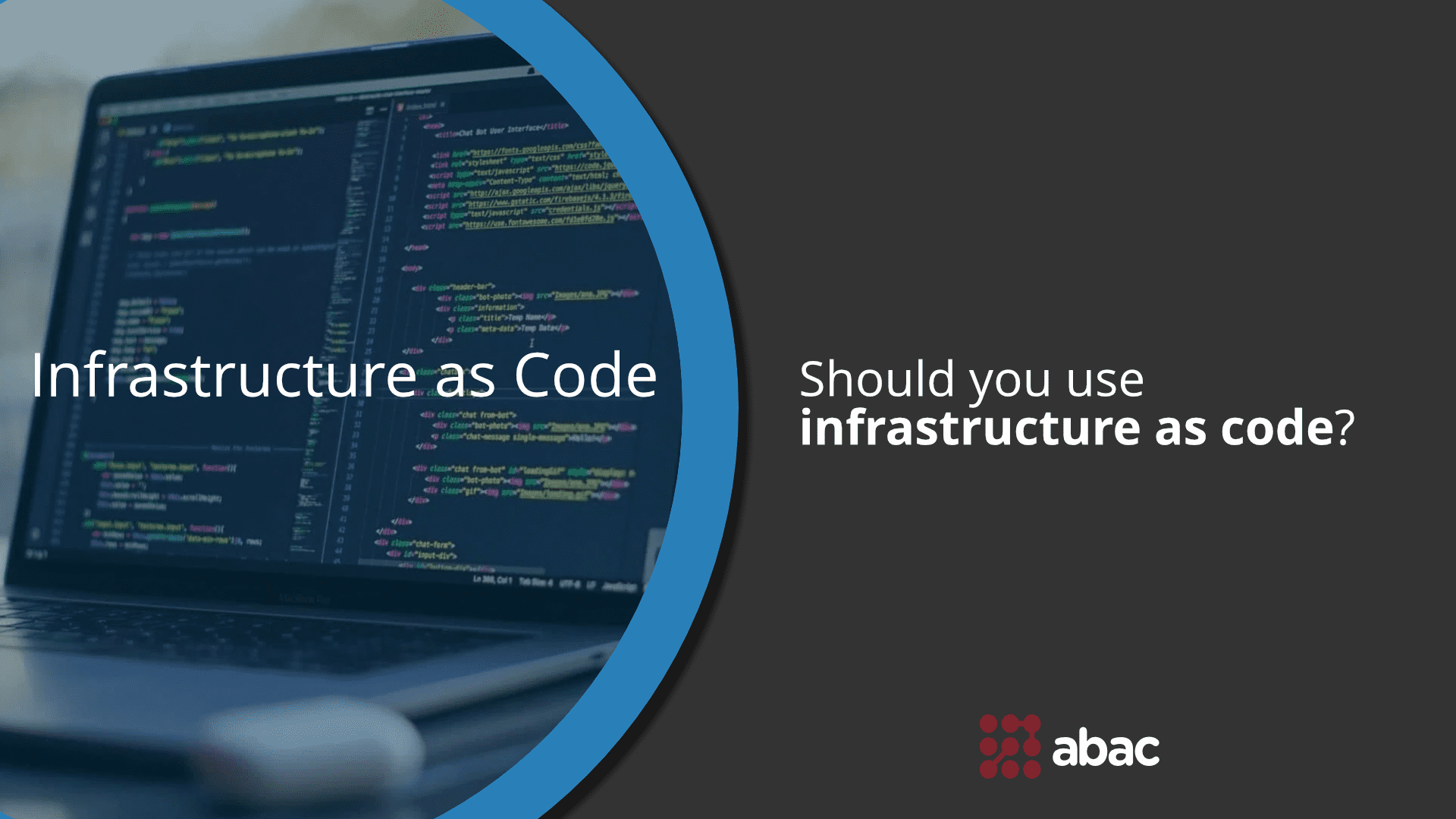If there’s one thing most developers love, it is automation. Figuring out how to automate menial, boring, and repetitive tasks allows you to work more on exciting things that truly require your expertise, while also improving the workflow and increasing the overall deployment speed.
For this reason, we think all of us should at least ponder on the idea of using Infrastructure as Code, or IaC for short. Manual management and provision of infrastructure is rather old school and leaves plenty of room for errors that the “future you” will most certainly not enjoy.
In addition, manual infrastructure management takes quite a bit of time and may reside on the costlier side of the spectrum. Unfortunately, these are two attributes that the DevOps department will not like to hear.
So, in this article, we have decided to tackle the 3 reasons why you should make the switch to IaC today. We will focus on the advantages it provides for developers, but also why it is valuable from a DevOps and business perspective. Ultimately, we will include the best tools on today’s market that you can use to implement IaC effortlessly.
But firstly, let’s make sure that we are on the same page with the definitions.
What is Infrastructure as Code, exactly?
IaC essentially implies the use of code to automate standard infrastructure operations. Specialized IaC tools do this by creating configuration files that encompass all infrastructure specifications (databases, services, networks, scaling specifications etc.). This centralized approach eases editing and distribution significantly.
IaC helps developers avoid undocumented configuration changes, while also ensuring that they provision the same environment every time. But deploying infrastructure as code also allows you to divide it into modular components, which can further be combined in multiple ways through automation.
However, not all IaC tools are created equally. There are two main mechanisms for codifying infrastructure that we should talk about: declarative and imperative.
A declarative mechanism lets you define the desired state of the system. This includes the resources you need, the properties they should have, and so on. Then, an IaC tool configures the system for you, while also keeping track of the current state of the system objects.
An imperative mechanism, on the other hand, only defines the specific commands needed to achieve the requested system configuration. This leaves the developer responsible for executing the commands in the right order, not really automating the process.
We think that declarative Infrastructure as Code tools can yield the best results and provide developers with the most value. To better illustrate this point, here are our top 3 reasons to make the switch to IaC today.
The advantages of IaC tools
- It reduces overall costs
Regardless of whether you decide to use an IaC tool or not, one thing will remain the same: the other IT tasks outside of infrastructure management. Manual infrastructure operations will eat into the available labour-power that a company has.
The more people involved with infrastructure, the less available people for the rest of the tasks. Thus, when an IaC tool automates the management and deployment of the environment, it automatically makes more people available for other projects. This saves a company money in two ways.
Firstly, by being able to reduce the size of the IT team it works with, as there are fewer people required to complete all daily tasks. Secondly, by increasing the efficiency of standard IT operations, as there are more people instantly available to focus on the projects that yield better results.
So, a company stands to both reduce its cost and increase its profits by accepting the use of an IaC tool. That’s a pitch most managers would love to hear more about.
- It facilitates a faster workflow
Manual configuration stands no chance of competing against an automated one. Thus, using IaC instantly gives a team of developers an edge over others who stick to manual management. Automatic execution gets the configuration on point quicker, but it also has a side-effect that increases the overall pace of work.
Because of the centralized way of storing the infrastructure specifications, the deployment becomes much more transparent and available for the team. Whenever team members need information pertaining to the infrastructure, they can find what they are looking for much quicker.
With manual configuration, it would take quite some time for the developer in charge of the infrastructure management to do it. All the while, they may be busy at the time… Either way, widely-available configurations make everyone’s lives easier.
- It reduces the risk of human error
Ultimately, the main difference between humans and robots is that robots are always going to be consistent. The infrastructure code deployed automatically will be the same every time, without any risk of manual misconfiguration.
By decreasing the average downtime and increasing reliability on the software, an IaC tool helps developers get closer to the ideal DevOps culture that companies seek. Using Infrastructure as Code creates a passive asset that works 24/7 without breaks, and, of course, without tiring. This is as close to development efficiency as you can get.
The downsides of IaC tools
Of course, it would be biased to only present the glamorous side of Infrastructure as Code. Until we get to the point of Terminator-like AI and perfect singularities, we should not expect any automatic solution to be devoid of flaws. This is most certainly the case with IaC tools as well.
For one, the need for additional tools, such as a configuration management system, risks cluttering the overall work environment. Having more things to keep an eye on isn’t anyone’s cup of tea. But the most outstanding downside to using IaC tools is the ease with which errors can spread.
Precisely because the same configuration is deployed every time, it must be absolutely devoid of any mistakes. If version control is not done properly, or if pre-testing is not comprehensive enough, the errors could spread across all servers under the IaC’s control.
Hence, a developer’s best shot of keeping things under control is to properly integrate the IaC tool into all IT, sysadmin, and DevOps processes. The policies and procedures should be transparent, easy to access, and well-documented. But even with these safety nets in place, there are chances for errors to mess everything up.
The bottom line
All in all, we think that Infrastructure as Code tools are a calculated risk for developers. If you are confident in implementing a proper framework for the use of the tool, along with complementary ones to keep everything in check, the potential upside of the transition is significant.
However, if you don’t want to take your chances or risk server-wide errors, the manual configuration remains a good choice. For those of you eager enough to learn more, you could look into today’s top IaC tools, such as Terraform or Ansible. Additionally, you could also use tools offered by cloud providers, such as Gcloud Deployment Manager, Azure Resource Manager, or AWS CloudFormation.
On their websites, you can find recommendations of use, general guidelines, and more details about each tool’s capabilities of helping you with your development work.

